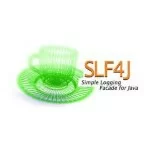Customizing Spring Data JPA Repository
Configuration
You have to add the following configuration to you spring beans configuration file. You have to specified a new repository factory class. We will develop the class later.
1 2 | <jpa:repositories base-package='example.borislam.dao'factory-class='example.borislam.data.springData.DefaultRepositoryFactoryBean/> |
Just develop an interface extending JpaRepository. You should remember to annotate it with @NoRepositoryBean.
1 2 3 4 | @NoRepositoryBeanpublic interface GenericRepository <T, ID extends Serializable> extends JpaRepository<T, ID> { } |
Define Custom repository base implementation class
Next step is to develop the customized base repository class. You can see that I just one property (i.e. springDataRepositoryInterface) inside this customized base repository. I just want to get more control on the behaviour of the customized behaviour of the repository interface. I will show how to add more features of this base repository class in the next post.
01 02 03 04 05 06 07 08 09 10 11 12 13 14 15 16 17 18 19 20 21 22 23 24 25 26 27 28 29 30 31 32 33 34 35 36 37 38 39 40 41 42 43 44 45 46 47 48 49 50 51 52 53 54 55 56 57 58 59 60 61 62 63 64 65 66 67 68 69 70 71 72 73 74 75 76 77 78 79 80 81 | @SuppressWarnings('unchecked')@NoRepositoryBeanpublic class GenericRepositoryImpl<T, ID extends Serializable> extends SimpleJpaRepository<T, ID> implements GenericRepository<T, ID> , Serializable{ private static final long serialVersionUID = 1L; static Logger logger = Logger.getLogger(GenericRepositoryImpl.class); private final JpaEntityInformation<T, ?> entityInformation; private final EntityManager em; private final DefaultPersistenceProvider provider; private Class<?> springDataRepositoryInterface; public Class<?> getSpringDataRepositoryInterface() { return springDataRepositoryInterface; } public void setSpringDataRepositoryInterface( Class<?> springDataRepositoryInterface) { this.springDataRepositoryInterface = springDataRepositoryInterface; } /** * Creates a new {@link SimpleJpaRepository} to manage objects of the given * {@link JpaEntityInformation}. * * @param entityInformation * @param entityManager */ public GenericRepositoryImpl (JpaEntityInformation<T, ?> entityInformation, EntityManager entityManager , Class<?> springDataRepositoryInterface) { super(entityInformation, entityManager); this.entityInformation = entityInformation; this.em = entityManager; this.provider = DefaultPersistenceProvider.fromEntityManager(entityManager); this.springDataRepositoryInterface = springDataRepositoryInterface; } /** * Creates a new {@link SimpleJpaRepository} to manage objects of the given * domain type. * * @param domainClass * @param em */ public GenericRepositoryImpl(Class<T> domainClass, EntityManager em) { this(JpaEntityInformationSupport.getMetadata(domainClass, em), em, null); } public <S extends T> S save(S entity) { if (this.entityInformation.isNew(entity)) { this.em.persist(entity); flush(); return entity; } entity = this.em.merge(entity); flush(); return entity; } public T saveWithoutFlush(T entity) { return super.save(entity); } public List<T> saveWithoutFlush(Iterable<? extends T> entities) { List<T> result = new ArrayList<T>(); if (entities == null) { return result; } for (T entity : entities) { result.add(saveWithoutFlush(entity)); } return result; }} |
As a simple example here, I just override the default save method of the SimpleJPARepository. The default behaviour of the save method will not flush after persist. I modified to make it flush after persist. On the other hand, I add another method called saveWithoutFlush() to allow developer to call save the entity without flush.
Define Custom repository factory bean
The last step is to create a factory bean class and factory class to produce repository based on your customized base repository class.
01 02 03 04 05 06 07 08 09 10 11 12 13 14 15 16 17 18 19 20 21 22 23 24 25 26 27 28 29 30 31 32 33 34 35 36 37 38 39 40 41 42 43 44 45 46 47 48 49 50 51 52 53 54 55 56 57 58 59 60 61 62 63 64 65 66 67 68 69 70 71 72 73 74 75 | public class DefaultRepositoryFactoryBean <T extends JpaRepository<S, ID>, S, ID extends Serializable> extends JpaRepositoryFactoryBean<T, S, ID> { /** * Returns a {@link RepositoryFactorySupport}. * * @param entityManager * @return */ protected RepositoryFactorySupport createRepositoryFactory( EntityManager entityManager) { return new DefaultRepositoryFactory(entityManager); }}/** * * The purpose of this class is to override the default behaviour of the spring JpaRepositoryFactory class. * It will produce a GenericRepositoryImpl object instead of SimpleJpaRepository. * */public class DefaultRepositoryFactory extends JpaRepositoryFactory{ private final EntityManager entityManager; private final QueryExtractor extractor; public DefaultRepositoryFactory(EntityManager entityManager) { super(entityManager); Assert.notNull(entityManager); this.entityManager = entityManager; this.extractor = DefaultPersistenceProvider.fromEntityManager(entityManager); } @SuppressWarnings({ 'unchecked', 'rawtypes' }) protected <T, ID extends Serializable> JpaRepository<?, ?> getTargetRepository( RepositoryMetadata metadata, EntityManager entityManager) { Class<?> repositoryInterface = metadata.getRepositoryInterface(); JpaEntityInformation<?, Serializable> entityInformation = getEntityInformation(metadata.getDomainType()); if (isQueryDslExecutor(repositoryInterface)) { return new QueryDslJpaRepository(entityInformation, entityManager); } else { return new GenericRepositoryImpl(entityInformation, entityManager, repositoryInterface); //custom implementation } } @Override protected Class<?> getRepositoryBaseClass(RepositoryMetadata metadata) { if (isQueryDslExecutor(metadata.getRepositoryInterface())) { return QueryDslJpaRepository.class; } else { return GenericRepositoryImpl.class; } } /** * Returns whether the given repository interface requires a QueryDsl * specific implementation to be chosen. * * @param repositoryInterface * @return */ private boolean isQueryDslExecutor(Class<?> repositoryInterface) { return QUERY_DSL_PRESENT && QueryDslPredicateExecutor.class .isAssignableFrom(repositoryInterface); } } |
Conclusion
You could now add more features to base repository class. In your program, you could now create your own repository interface extending GenericRepository instead of JpaRepository.
1 2 3 4 | public interface MyRepository <T, ID extends Serializable> extends GenericRepository <T, ID> { void someCustomMethod(ID id); } |
In next post, I will show you how to add hibernate filter features to this GenericRepository.
Reference: Customizing Spring Data JPA Repository from our JCG partner Boris Lam at the Programming Peacefully blog.






Hi, I am searching for the solution how to extend QueryDslJpaRepository, because I would like to have some features from it. I did as simple as possible having the abstract class extending it, but it seems that is not a good approach, because once I enter in some Service that would use detailed implementation of the Repository I see that not only *Impl is taken under consideration but also the interface itself… And when I am trying to run the project I get en error that: Caused by: org.springframework.beans.factory.BeanCreationException: Error creating bean with name ‘SClientProblemReportService’: Injection of autowired dependencies failed;… Read more »